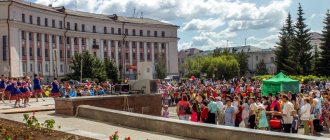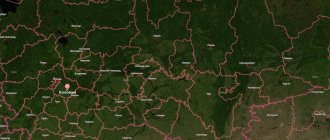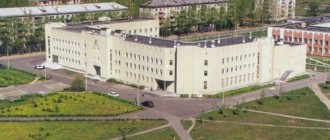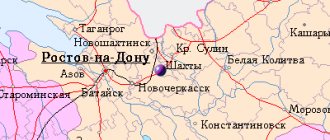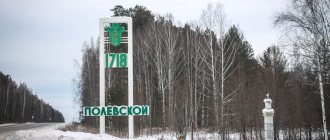There are many small towns in Russia with a long and interesting history, and the city of Buzuluk can be counted among them.
The city was founded in 1736, 150 Cossacks served and lived in it at that time, but currently Buzuluk has up to 86 thousand inhabitants.
The expedition led by Ivan Kirillovich Kirillov (geographer, historian, statesman) founded a number of fortresses, including on the left tributary of the Samara , on the Buzuluk . The fortresses were supposed to secure the southeastern borders from raids by nomads and protect the road to Orenburg.
The Buzuluk fortress was surrounded by a large rampart, surrounded by a moat and had log walls on which cannons were placed on top. It was built of wood, and the fire of 1785 destroyed almost the entire city. After this, the fortress was not restored, the city was not surrounded, and the ditch was filled up.
The city is rich in attractions.
Water tower
It is located near the pedagogical college, on Lenin, 67. Made in the same pseudo-Gothic style and designed by the same architect. Date of construction: 1905.
photo from the site: 7 wonders of Buzuluk
In the city center, at the intersection of Yarosha and Chapaeva streets, there is another building with an interesting facade, built of red brick. This is the former Men's Real School.
Etymology
The fortress was named after the Samara tributary river on which it was built. Buzuluk is a fairly common name in the steppe regions where Turkic tribes roamed. Rivers of the same name flow in the Volgograd and Dnepropetrovsk regions.
Comes from the ancient Turkic toponym “buzuluk”, which translates as “ice”. Usually nomadic tribes called this small rivers that fill only in the spring, when the snow and ice melt. In Crimea there is a Buzuluk cave, the bottom of which is covered with non-melting ice. The name is translated from Crimean Tatar as “glacier” or “accumulation of ice.”
There is another version - that Buzuluk comes from the Tatar “bozau” - “calf” or “bozaulyk” - “veal fence”. According to this hypothesis, the place where the river flows into Samara is very convenient for grazing calves. According to another alternative version, the name of the city was given by the Turkic tribe Buzu or Base, which translates as “rebellious” and “rebellious”.
Men's real school.
The building was built in 1911. A.S. Pushkin stayed there, during the Soviet years there was a school, and during the Great Patriotic War there was an evacuation hospital.
photo from the site: 7 wonders of Buzuluk
The local history museum on Lenina, 56 participates in the all-Russian “Night of Museums” program; photo exhibitions are also held here.
The building of the former Zemstvo Government.
The façade of the building is made in the pompous Russian Art Nouveau style and is undoubtedly a decoration of the city. It is believed that the building was built by captured Austrians, who were given freedom and secretly (unofficially) sent to their homeland. In 1917, it hosted the district congress of workers and peasants' deputies; during the Great Patriotic War, the headquarters of the armed forces of the Polish Republic (Anders' Army) was located. Nowadays, an industrial and pedagogical college has settled here.
photo from the site: 7 wonders of Buzuluk
Address: st. May 1, 35.
Buzuluk on the map of Russia, geography, nature and climate
On the map of Russia, Buzuluk can be found northwest of the regional center and southeast of Samara.
The city is located at the picturesque confluence of the Samara , Domashka and Buzuluk .
The nature of the area is atypical for southern latitudes: steppe vegetation neighbors the Buzuluksky forest, the southernmost natural coniferous forest in Russia.
The climate is sharply continental: winters are harsh and long; summer is hot, dry, but short-lived.
St. Tikhvin Convent
The first monastery built in the Orenburg region, built in 1857, received official status in 1859. By 1890, the number of buildings in it increased - there were already economic services, several churches, and fences.
photo from the site: 7 wonders of Buzuluk
Like many other churches, in 1920 the monastery was looted and destroyed. Then the religious buildings were used for various needs. In one of the temples of the complex there was a power plant, in the 30s there was a transit prison, and at the end of the last century there was an energy enterprise. At the turn of the 20th–21st centuries, the temple complex began to be restored. The main shrines of the monastery, which you can familiarize yourself with, are the Tikhvin Icon of the Mother of God and the icon of St. Seraphim of Sarov with a particle of his relics.
Address: Buzuluk, st. Sergo, 1.
Cities
The city of Buzuluk is a city in the Orenburg region of Russia. The city is the administrative center of the Buzuluk municipal district and the Buzuluk urban district. The city and the district have regional subordination and are not part of the district. Population 89.7 thousand people as of the end of 2011. The city is located on the rivers Samara, Buzuluk and Domashka, 246 km from Orenburg and 176 km from Samara. Buzuluksky Bor is located 15 km north of the city. On the northwestern outskirts of the city there is a sports airfield. 40 km from the city is the Totsky training ground, where on September 14, 1954 exercises using nuclear weapons were held. The city of Buzuluk is located at 52.2° north latitude, near the border with the Samara region. In fact, the city is equidistant from all economically significant cities in its region: from Orenburg, Ufa, Kazan, Samara, which is the reason that Buzuluk, despite its small size, is considered the center of Western Orenburg. Absolute surface elevations of the territory vary from 70 m to 75 m. Buzuluk, like the entire Orenburg region, is located in a time zone designated by the international standard as Yekaterinburg Time Zone (YEKT).
The offset relative to UTC is +6:00. Relative to Moscow time, the time zone has a constant offset of +2 hours and is designated in Russia accordingly as MSK+2. Buzuluk time differs from standard time by two hours. Buzuluk is located in temperate latitudes. The climate in the city is sharply continental, which is manifested in a general lengthening of winter, shortening of transition periods, and an increase in frost danger at the beginning and end of summer.
Education in Buzuluk
Currently, the city has 26 preschool education institutions, 13 educational and 3 special correctional schools, an evening school, a educational institution, a center for social and psychological assistance to the population, and 4 additional education institutions. Buzuluk is a student city. In recent years, the number of citizens with higher education in the city of Buzuluk has increased: Buzuluk Humanitarian and Technological Institute, representative offices of the Orenburg Agrarian University in forestry and drainage technical schools, students of the Samara Technological and Orenburg State Universities study on the basis of the construction college, students of the Orenburg State University study on the basis of the Pedagogical College Pedagogical University and Orsk Pedagogical Institute. Secondary specialized education can be obtained in 8 secondary specialized educational institutions: financial, construction, pedagogical, medical colleges, college of industry and transport, forestry and irrigation technical schools, music school. Young people can obtain working professions in three vocational schools. The eight libraries of the centralized city library system (established in 1976) have a large literary and educational collection.
Economy of the city of Buzuluk
In the 1960s, the development of Buzuluk oil fields began. In 1973, Buzuluk oil entered the international market via the Druzhba main oil pipeline. The city began to be called the oil capital of the Orenburg region. Sewing, leather goods, glove, furniture factories. 2 engineering plants. Oil and gas industry enterprises. In Buzuluk there are 13 general education and 2 specialized schools, 26 municipal kindergartens, three vocational schools, eight secondary educational institutions, the Buzuluk Humanitarian and Technological Institute (branch) of Orenburg State University, 17 healthcare institutions. An oncology center is being built. In August 2005, Buzuluk became the best municipal entity in the Orenburg region in terms of economic development indicators, and in September 2005 it was recognized as the winner of the 4th All-Russian competition for economic development “Golden Ruble” in the Volga Federal District in the “Medium City” category.
History of the city of Buzuluk
The name Buzuluk first appeared on a map of Muscovy published in England in 1562. In the summer of 1734, an expedition set out from the city of Ufa, which, for reasons of secrecy, was called “famous”, and then was called “Orenburg” after the name of the fortress and trading city, which it founded where Yaik turned sharply from north to west. Returning after the founding of the fortress city at the mouth of the Or River (now the city of Orsk), the expedition of the “great zealot and lover of science”, Chief Secretary of the Senate Ivan Kirillovich Kirilov, along the way from the Sakmara town to Samara, founded fortresses in places convenient for this purpose. They were called upon to maintain order in the southeastern regions and control the road to newborn Orenburg. So in the spring and summer of 1736, a new fortress arose on the left bank of Samara - Buzulukskaya. Kirilov called the road from the Yaika River to Samara the “Moscow Road”. Kirilov founded the Buzuluk fortress on the steep bank of Samara at the mouth of the Buzuluk River. But here, as on Ori, the governor was unlucky with his choice of location. After the spring floods, the lowland remained under water for a long time and the fortress was cut off for a long time from the surrounding areas and turned into an island. Therefore, the fortress had to be moved to a higher place - to the Domashka River and Lake Banny, where traces of some ancient settlement were discovered. The famous naturalist and historian of our region, a participant in Kirilov’s expedition, Pyotr Ivanovich Rychkov, later wrote in “Topography of the Orenburg Region”: “They say according to legend that in ancient times on the site of Buzuluk there was a Tatar city of Aulgan, named after the Aulgan Khan who lived here. The ruins of this city were dismantled by the inhabitants of the city for their buildings.” The Buzuluk fortress was named after the river, a tributary of the Samara. And the origin of the name of the river is explained as follows. The word “Buzuluk” comes from the Turkic word “bazau” - calf, “bazaulyk” - veal pasture. Over the years, this name was transformed into Buzuluk. Local historians consider this interpretation to be the most conclusive, since, firstly, many settlements in the steppe zone of southeastern Europe bear names left over from time immemorial by nomads; secondly, there are rivers with the name Buzuluk in other steppe regions, in particular in the Volgograd and Dnepropetrovsk regions, and the latter, until very recently, bore the name Bazavluk; thirdly, at the confluence of the river with Samara there is a really convenient place for a veal pen, limited on almost three sides by water... The first settlers in the fortress were 478 Yaik Cossacks, 19 Nogais and 47 people of different ranks. In search of a better life, a stream of immigrants from the central provinces poured across the Volga to new lands. This could not but worry the tsarist government. By order of the Senate, a population census was carried out in 1740. Family lists of the population of the Buzuluk fortress were preserved in the State Archive of Ancient Acts in Moscow. According to the testimony of Orenburg local historian, researcher at the regional museum S.A. Popov, who got acquainted with these rare documents, in April 1740 there were 629 people of both sexes in the Buzuluk fortress, of which 240 were Cossacks, and the rest were members of their families. The Cossacks were divided into “salaried” - those who received a salary for their service (148 people) and “arable” - those who were engaged in agriculture (92 people). Interesting information about the literacy of the then Buzuluk population. Of the 240 Cossacks, only three were able to sign their testimony, and for the rest, “at their request, the clerk Semyon Chekalov took a hand in the Sorochinsky fortress.” The Sorochinsk fortress was considered the main one on the Samara line, or distance, as they said then. But nevertheless, Buzulukskaya developed noticeably faster. There were special reasons for this. From spring, after the opening of the rivers, until late autumn, almost until the freeze-up, Buzuluk became a major transshipment base. On small boats, barges and other small ships, wheat, leather, felt and other goods were delivered from here across Samara to the Totskaya and Sorochinskaya fortresses, and ships with stone, timber, and firewood traveled along the Buzuluk River to Andreevka. All this was delivered to Buzuluk on larger ships that could reach the Volga expanses. The sleepy, drowsy life of the Buzuluk fortress lasted almost forty years until the autumn of 1773. Then, in the Orenburg steppes, an uprising of unprecedented scale took place, which soon grew into a real Peasant War under the leadership of the people's leader Emelyan Ivanovich Pugachev. Capturing the fortresses of the Nizhne-Yaitskaya line one after another, Pugachev and his army quickly moved towards Orenburg and besieged it. Tsarist troops were sent from all sides to help the capital of the province. Simbirsk commandant Colonel Chernyshev, on the way to Orenburg, took away almost the entire garrison of the Buzuluk fortress. Near Orenburg itself, under Mount Mayak, the entire detachment with the convoy was captured by the Pugachevites. Having learned about this, the commandant of the Buzuluk fortress, Lieutenant Colonel Wulf, very simply solved all the problems of defense. Abandoning a garrison of 27 soldiers to the mercy of fate, he fled to Samara on November 18. The Buzuluk army turned out to be a match for its commandant. The soldiers did not offer any resistance to the Pugachev detachment of Ilya Arapov, who entered the fortress through the Orenburg Gate on November 30. The fate of the garrison was decided in a very unique way. Arapov’s comrade-in-arms, retired soldier Ivan Zhilkin, “took scissors, cut off the soldiers’ braids and sent them home.” Fugitive peasants flocked to the Buzuluk fortress from all sides. By February 1774, the rebels concentrated about two thousand people with 15 guns in Buzuluk. But the scattered, poorly armed peasant mass, who had no combat experience, was relatively easily defeated by the detachment of Major General Mansurov, who cut off the Pugachevites’ retreat to the Totskoye fortress, and then, after an almost four-hour battle on February 14, captured the Buzuluk fortress and headed further to Orenburg. The uprising was suppressed in the most brutal manner. Pugachev and thousands of his comrades were executed, thousands were sent to hard labor. The Yaik River was also punished, it was renamed the Ural, and the Orenburg province, which was simply abolished. The Ufa governorate was formed. At the same time, new county boundaries were determined. Since 1851, Buzuluk became part of the Samara province formed in the Volga region, and since 1930 - into the Middle Volga region. On December 7, 1934, the Orenburg region was separated from the Middle Volga region, and Buzuluk and the Buzuluk district were administratively assigned to it. Buzuluk often found himself at the center of historical events. The Pugachevites visited it; during the civil war, the army of Ataman Dutov, the advanced detachments of Kolchak’s army, and the Chapaev division took the oath of allegiance to the Motherland. During the Great Patriotic War, five industrial enterprises evacuated from the western regions of the country produced products for the front in Buzuluk; 3 divisions of the Red Army, the First Separate Czechoslovak Battalion of Ludwik Svoboda, and the Polish Army of General Wladyslaw Anders were formed. 35 thousand Buzulu residents went to the front to fight the fascist invaders. More than 11 thousand of them died. In 1781, Buzuluk, according to the decree of Catherine II, was transformed into a district town. A year later, the coat of arms of the young city was approved - in the upper part there is a running marten, and in the lower part there is a deer - a sign of the abundance of such animals in these places. According to the 1781 census, there were 238 houses with 571 population in Buzuluk. The means of subsistence recorded are arable farming, animal hunting and fishing. Four years after Buzuluk was approved as a city, it burned down during a ceremonial meeting of the governor of the Orenburg region, Baron Igelstrom. The eminent guest was greeted magnificently - with bells ringing and cannon fire. And then an incident occurred. One of the bombardiers, who really wanted to look at the governor, gaped and dropped the fuse into the powder magazine. The explosion, and then a strong fire, destroyed the city almost to the ground. After the fire, the fortifications were no longer restored. The shaft was razed and the ditch was filled in. But only in 1828, the city police officer sold the last weapons of the Buzuluk fortress to the merchant Kozlov for scrap for 42 rubles 61 kopecks: 7 cannons, 106 cannonballs, 99 pounds 20 pounds of shot. Buzuluk grew slowly. In 1862, the city had 8,563 residents, 304 trading shops, 5 churches and 2 monasteries. Every year from October 1 to October 8, fairs were held in the city; merchants from Samara, Orenburg, Kazan, Ufa and other cities came here with textile, cloth, leather and other goods. Local residents traded livestock, bread, linens, flax, and hemp. The development of the city accelerated due to the construction of the Samara-Tashkent railway. A station, locomotive and carriage depot were built in Buzuluk. One of the first passengers to arrive on the banks of the Urals “by cast iron” was L.N. Tolstoy, subsequently he visited Buzuluk more than once. At the turn of the 19th and 20th centuries. Industrial enterprises appear in Buzuluk. Basically, these were small factories of semi-handicraft type - lard, tannery, wine, brick, wax, soap, steam mill. Then the Nikitin iron foundry and the Kammerloch mechanical plant, which produced agricultural implements, appeared. Soviet power in the city was proclaimed on November 10, 1917 at a joint meeting of the Soviets of Workers', Soldiers' and Peasants' Deputies, the City Duma and the Zemstvo Government, and the first Revolutionary Committee was created, headed by machinist Pyotr Grigorievich Bebin. On December 28, 1917, the executive committee of the county council was formed. The Executive Committee energetically got down to business. In January 1918, he nationalized the power plants, and then the Nikitin plant and the Kiel workshops. The newspaper “Svobodnoe Slovo” was transformed into “Izvestia of the Buzuluk Council”. Buzuluk became a real red fortress, a center for mobilizing revolutionary forces to fight the White Guards. It was from here that they left for Orenburg in 1918 and 1919. red regiments under the command of Kobozev, Pavlov, Zinoviev. From here, at the end of April 1919, a strike group of troops of the Eastern Front went on the offensive to deliver the main blow to Kolchak. After the uprising of the Czechoslovak Corps, the city was in the hands of the White Guards for four months, until it was occupied by the 2nd Brigade of the 24th Siberian Division, led by A. Sedyakin. Another famous part of the Red Army, the 1st Brigade of the 25th Chapaev Division, commanded by Ivan Kutyakov, also fought on the territory of the district. During the Great Patriotic War, on the basis of Soviet-Czechoslovak agreements on joint actions in the war with Germany dated July 18 and September 27, 1941, the creation of the first foreign military unit on the territory of the USSR - the 1st Separate Czechoslovak Battalion - began in Buzuluk. Its formation was completed in July 1942. The battalion was headed by Ludwig Svoboda. Having become famous in the battle near the village of Sokolovo, the battalion in October 1944 reached the border of Czechoslovakia. Then it was transformed into the 1st Czechoslovak Army Corps, becoming the basis of the People's Army of the Czechoslovak Socialist Republic. Ludwig Svoboda in 1940-1950 served as Minister of National Defense from 1968-1975. was the president of Czechoslovakia. Returning to Buzuluk in peacetime, he awarded the city the Order of the Red Star (Czechoslovakia) and wrote in the guest book: “Every Czech and every Slovak dreams of visiting Buzuluk.” During the Great Patriotic War, most of the factories throughout the Orenburg region were rebuilt to produce heavy military equipment: tanks and armored cars. Many enterprises from Central Russia were evacuated here. In the post-war years, they switched to manufacturing products for the metallurgical and mining industries. Today Buzuluk is a city of oil workers. The first tons of oil at the Pokrovskoye field were produced in 1961. This well became the pioneer of big oil in the Orenburg region.
| Coat of arms of the city of Buzuluk - On the modern coat of arms of the city (1998) in a green field standing on golden ground is a silver deer. | The flag of the city of Buzuluk is a rectangular panel with a width to length ratio of 2:3, divided horizontally by a straight line into two unequal parts - dark green (occupying 3/4 of the panel) and golden yellow (occupying 1/4 of the panel); on top of the field, in the middle of the canvas, a white figure of a standing deer is reproduced, facing the shaft, divided by a thin dark outline; the ratio of the height of the deer figure to the width of the panel is 3:4. |
Cathedral of St. Nicholas the Wonderworker
Years of construction: 1908–1910. Located near the railway station. The temple is very beautiful, but it is not authentic - it is a restored building, since it was partially destroyed in the 30s. Since 1990, the cathedral has been reopened to believers.
photo from the site: 7 wonders of Buzuluk
Address: Cathedral of St. Nicholas Myra of Lycian Wonderworker in Buzuluk
461040, Orenburg region, Buzuluk, st. 1st line, no. 57
temple: 8 (353-42) 5-04-04; 8 (353-42) 5-04-54
Routes on the map of Buzuluk. Transport infrastructure
The Buzuluka railway station was built on the route of trains from Orenburg to Kinel along the South Ural Road.
P224 highway .
The regional highway P246 , connecting Bugulma and Uralsk.
There are two main types of public transport within the city: buses and minibuses. They connect residential neighborhoods with socially significant facilities.

